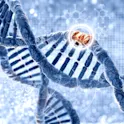
Health
10 May 2016
‘Towards an Understanding of Tinnitus Heterogeneity’ now open for submissions
By Martina Haller, Frontiers “Tinnitus is the perception of a sound when no external sound is present. The severity of tinnitus varies but it can be debilitating for many patients. With more than 100 million people with chronic tinnitus worldwide, tinnitus is a disorder of high prevalence. The increased knowledge in the neuroscience of tinnitus has led to the emergence of promising treatment approaches, but no uniformly effective treatment for tinnitus has been identified. The large patient heterogeneity is considered to be the major obstacle for the development of effective treatment strategies against tinnitus.” To bring together the latest scientific advances in Tinnitus research, Dr Christopher R Cederroth and Dr Winfried Schlee have initiated the Frontiers Research Topic Towards an Understanding of Tinnitus Heterogeneity. We asked them about their vision and challenges they wish to address in this highly inter- and multidisciplinary Research Topic. What motivated you to organize this Research Topic? Tinnitus is a prevalent condition that can be extremely bothersome. Its complexity and variety of phenotypes is a likely cause to failures in therapeutic interventions. This is why the fundamental understanding of tinnitus, its mechanisms and its successful treatment will require the converged efforts of multiple disciplines. […]













